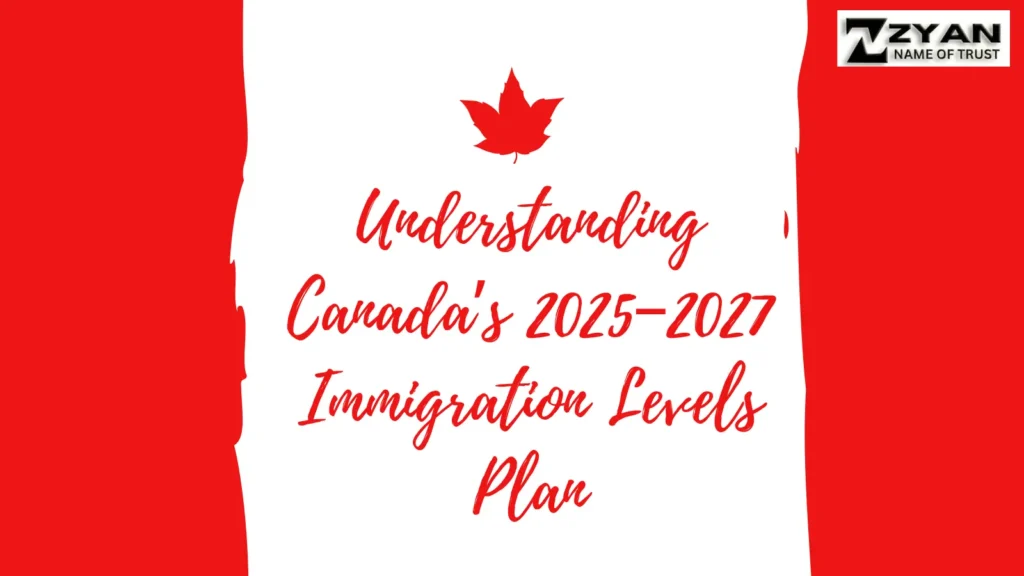
The recently announced 2025-2027 Immigration Levels Plan reflects a significant shift in the country’s approach. However, Canada’s immigration policy has long been a cornerstone of its economic and cultural growth. With plans to reduce permanent resident admissions over the next three years, the policy aims to balance economic needs with infrastructure limitations. This blog delves into the details of these changes, the reasons behind them, and their implications for prospective immigrants.
Canada’s Immigration Levels for 2025, 2026, and 2027
Projected Admission Numbers
The new immigration levels plan marks a departure from Canada’s traditionally high targets. Here are the projected numbers for the coming years:
2025: Canada plans to admit approximately 375,000 permanent residents, a decrease from previous years.
2026: The target will further reduce to around 340,000 admissions.
2027: The final year of the plan anticipates only 325,000 new permanent residents.
These numbers indicate a 21% reduction in immigration targets compared to earlier projections. This decline is primarily focused on economic-class immigrants, family reunifications, and humanitarian admissions.
Historical Comparison
In recent years, Canada’s immigration levels consistently surpassed 400,000 annually, making the reduction a notable policy shift. For instance:
2021: Canada welcomed over 405,000 new immigrants, setting a record.
2022: Targets increased to nearly 430,000 permanent residents.
2023: Immigration numbers were expected to exceed 465,000.
This historical context underscores the drastic nature of the adjustments in the 2025-2027 Immigration Levels Plan.
Reasons Behind the Reduction in Immigration Targets
1. Infrastructure Capacity
Canada’s infrastructure is struggling to keep pace with the influx of newcomers. Challenges include:
Housing Shortages: Major cities like Toronto and Vancouver are grappling with housing affordability and availability.
Public Services: Increased demand for healthcare, education, and transportation services has stretched resources thin.
2. Economic and Social Pressures
Rising Costs of Living
The cost of living in Canada, especially in urban centers, has escalated significantly. Immigration contributes to population growth, which can exacerbate competition for limited resources.
Employment Market Adjustments
While immigrants play a crucial role in addressing labor shortages, an overly rapid increase in the workforce can strain the job market, especially in sectors with slower economic recovery.
3. Housing Concerns
Housing availability has been a key factor influencing immigration targets. The Canadian government has faced criticism for failing to align immigration levels with housing supply.
Key Stats on Housing:
The Canadian Real Estate Association reported a 30% increase in housing prices over the past three years.
Urban centers face chronic shortages, pushing immigrants to settle in smaller communities.
Implications for Prospective Immigrants
1. Increased Competition
With lower admission targets, the competition for permanent residency will intensify. Applicants will need to:
-
Enhance their profiles: Focus on language skills, educational qualifications, and work experience.
-
Explore alternative pathways: Provincial Nominee Programs (PNPs) and employer-driven streams may become more critical.
2. Delayed Processing Times
The reduction in targets may inadvertently increase application backlogs, leading to longer processing times. Immigration, Refugees and Citizenship Canada (IRCC) may prioritize certain categories, such as economic-class immigrants, over others.
3. Shifts in Immigration Pathways
Programs like the Express Entry system may see changes in Comprehensive Ranking System (CRS) score cut-offs. Family reunification applicants might face stricter eligibility requirements.
Strategies for Navigating the New Landscape
1. Stay Informed
Keep track of updates from IRCC and Provincial Nominee Programs to understand the evolving criteria.
2. Focus on Regional Opportunities
Smaller provinces and territories with labor shortages may offer easier pathways to permanent residency through their PNPs.
3. Build a Stronger Profile
Enhance your eligibility by:
Improving language test scores.
Gaining additional work experience in in-demand sectors.
Pursuing Canadian educational qualifications.
How Zyan Immigration Can Help
Navigating Canada’s evolving immigration landscape can be complex, but Zyan Immigration is here to guide you every step of the way. Our expert consultants specialize in:
Assisting with Express Entry and Provincial Nominee Programs.
Providing tailored advice to improve your immigration profile.
Offering up-to-date information on the latest IRCC policies.
By partnering with Zyan Immigration, you can maximize your chances of success in achieving your dream of Canadian residency. The 2025–2027 Immigration Levels Plan may seem daunting, but with expert guidance, it is possible to adapt and thrive.
Economic and Social Impacts of the Policy
Positive Effects
Eased Pressure on Infrastructure
Reducing immigration levels allows the government to address housing shortages and improve public services.
Focus on Integration
Lower targets enable better integration of newcomers into the economy and society.
Potential Challenges
Labor Shortages
Industries like healthcare, technology, and construction may face recruitment difficulties due to fewer skilled immigrants entering the workforce.
Slower Economic Growth
Immigration has been a driver of Canada’s economic growth. A reduction in newcomers could result in slower GDP growth and reduced innovation.
What’s Next for Canada’s Immigration?
The 2025–2027 Immigration Levels Plan reflects a recalibration of Canada’s immigration policy to balance growth with sustainability. While it presents challenges for prospective immigrants, understanding the changes and adapting accordingly can improve your chances of success. Canada’s provinces and territories will play a pivotal role in shaping immigration outcomes, making it essential for applicants to remain flexible and informed.
For those aiming to make Canada their home, thorough preparation and a strategic approach will be key in navigating this evolving landscape.
Partner with Zyan Immigration today to simplify your immigration journey and achieve your Canadian dream. Contact us now for a consultation! The 2025–2027 Immigration Levels Plan may require adjustments, but it opens new pathways for those who are ready to adapt.
Stay tuned for more updates on Canada’s immigration policies. Share your thoughts or queries in the comments below!



